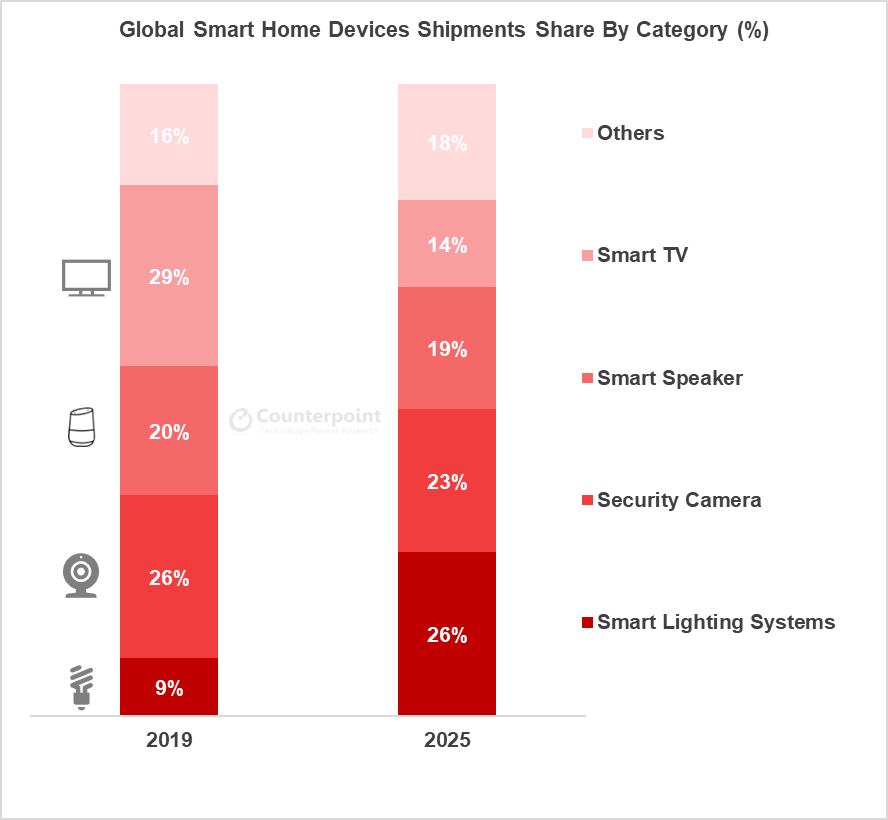• More than six-billion Wi-Fi capable smart home devices to be shipped between 2020-2025
According to Counterpoint’s latest Smart Home research, the global smart home market is projected to grow at a CAGR of 21% from 2019-2025. The strongest growth areas include white goods, smart lighting, and home automation segments as more household items become connected to a smart home ecosystem.
Sharing the research findings, Research Analyst Maurice Klaehne, noted, The current smart home market is dominated by three categories, smart TV, security cameras, and smart speakers. Each of these markets have different drivers which have made them successful.
Smart TV’s have seen great adoption in North America and China as streaming media options such as Netflix or iQiyi have grown in popularity over the years. Connected TVs are also challenging conventional cable viewing habits and making people ‘cut the cord’. The COVID19 pandemic will further accelerate this trend, he added.
Klaehne continued, “For security cameras, price reductions in connected cameras have enabled more people to purchase cameras for their home to offer additional layers of security and peace of mind. Lastly, smart speakers have been one of the fastest-growing markets to date due to the low barrier for entry for consumers to gain access to a smart home device. Smart speakers satisfy multiple smart home use-cases, capable of streaming music, enabling personal voice assistant services such as Alexa, Google Assistant, AliGenie, Siri, and others, and acting as a smart home hub even for other devices.”
Speaking about future growth areas, Senior Analyst Hanish Bhatia, added, “Connected white goods and smart lighting systems will be the fastest-growing segments over the forecasted period. White goods such as dishwashers, refrigerators, and laundry machines are increasingly becoming ‘smart’ through added Wi-Fi or other connectivity modules. These give consumers more data on their device which can then be used to better manage home energy consumption and help in product maintenance and care. For smart lighting systems, there are currently pain-points around pricing and properly connecting the system to a smart home hub. However, costs for these systems will continue decreasing and improved connectivity solutions will alleviate these pain-points in the future.”

Commenting on the key connectivity drivers, Bhatia, elaborated, “Wi-Fi is expected to be the major driver to enable smart capabilities and will contribute to three-fourths of all connectivity types in smart home devices in 2025. More than six billion Wi-Fi capable smart home devices will be shipped globally between 2020-2025.
China and North America will contribute close to half of all those shipments. Further, the increased speed and load capacity capabilities of the latest Wi-Fi 6 version will be key to keep dozens of content and performance-centric devices seamlessly connected in a smart home and thus feature in a majority of shipments by 2023. We will also see major cost reductions in Wi-Fi 6 modules over the next years which will also help grow this segment.”























